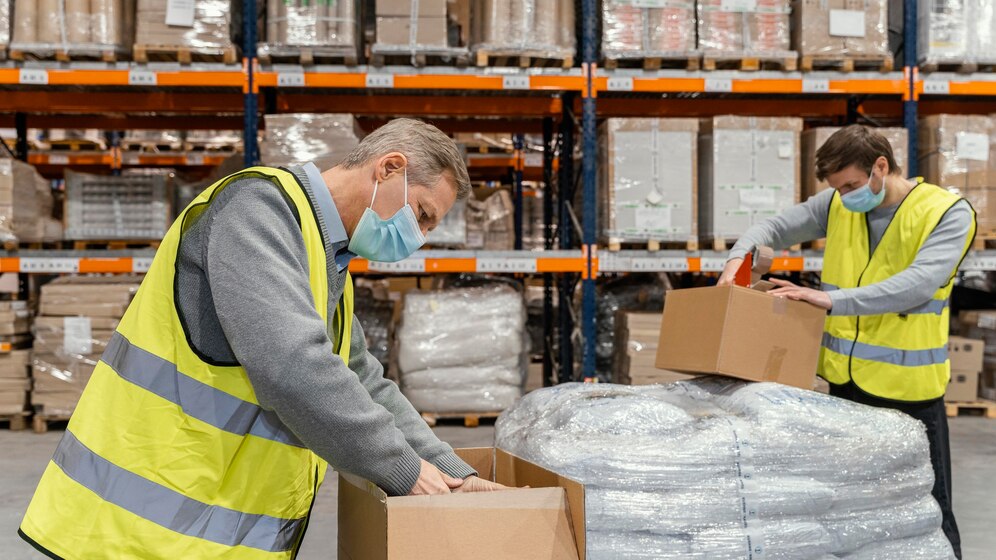Best Practices For Safe Shipping Of Hazardous Goods And Materials
by Abdul Aziz Mondal Business 27 May 2023

Do you agree that shipping hazardous goods and items can be a real headache?
That’s why it’s important to understand the best practices for shipping these dangerous materials and ensure you’re properly trained.
In this blog post, we’ll cover the basics of safe shipping these items and highlight the importance of the OSHA training 40 hour program. So, stay still and get ready to learn about the dos and don’ts of shipping hazardous materials!
Understanding The Regulations
If you’re planning on shipping hazardous materials, knowing the regulations and standards set by OSHA is essential. These rules ensure the safety of everyone involved in the process, including workers, drivers, and the general public. Therefore, it’s important to comply with these regulations to avoid accidents and legal issues.
So, what are these regulations, and what do you need to know?
Classifications
First, hazardous materials are classified into different categories, known as “hazard classes.” Each class has a set of rules and requirements for packaging, labeling, and transportation. For example, Class 1 includes explosives, while Class 8 includes corrosive materials.
These also require that anyone who handles, packages, or transports hazardous materials receive proper training. This training should cover the regulations, best practices, and emergency response procedures.
And failure to comply with these regulations can result in fines, penalties, and legal issues. Besides, it’s not worth risking an accident or legal trouble to save time or money.
By taking the time to understand the rules and allowing yourself to know the best practices, you can help ensure safe and compliant shipping of hazardous materials.
Proper Handling And Packaging Of Hazardous Materials
When shipping hazardous materials, proper handling and packaging are crucial to safety. Yes?
Improper handling or packaging can lead to spills, leaks, or even explosions, putting everyone involved in danger. So, what are some best practices for handling and packaging hazardous materials? Let’s break it down below.
First, use the appropriate packaging materials for the material being shipped. This can include drums, bottles, or other containers specifically designed for hazardous materials.
Properly seal and label all containers, and ensure the labels are easily visible and legible. Handling hazardous materials carefully and with the appropriate safety equipment is also important.
This can include gloves, goggles, and other protective gear, depending on the material being handled. Identify each material safety data sheet (MSDS) and other material handling guidelines.
By properly handling and packaging hazardous materials, you can help prevent accidents and ensure the safety of everyone involved in the shipping process. Don’t cut corners or take shortcuts regarding safety. It’s always better to be safe than sorry!
Emergency Response Procedures
Accidents can still happen when shipping hazardous materials. That’s why it’s crucial to have emergency response procedures. This comes with appropriate emergency equipment, such as spill kits, on hand and a plan for how to respond to different types of emergencies.
Ensure all workers involved in the shipping process know the emergency response procedures and know what to do in case of an accident. By being prepared and having a plan, you can minimize the damage and keep everyone safe in an emergency.
Importance Of OSHA Training 40-Hour Program
The OSHA Training 40-Hour Program is an essential tool for anyone involved in shipping hazardous materials. This program covers best practices and emergency response procedures for shipping hazardous materials and provides workers with the knowledge and skills to safely handle and transport these materials.
By completing the OSHA Training 40-Hour Program, you can ensure workers comply with OSHA regulations and take all necessary precautions to keep themselves and others safe. This program can also help prevent accidents, reduce liability, and save companies money in the long run by avoiding fines and legal issues.
Good Investment
Investing in the OSHA Training 40-Hour Program invests in the safety and well-being of workers and the general public. It’s a little price to pay for the peace of mind that comes with knowing you’re doing everything you can to ensure safe and compliant shipping of hazardous materials.
Frequently Asked Questions
Here’s what most people ask about the best practices for the safe shipping of hazardous goods and materials.
What Are 3 Safe Practices When Using Or Handling Hazardous Materials?
The 3 safe practices are:
- Thoroughly train employees in handling and safety procedures.
- Isolate hazardous substances in separate storage areas.
- Give personal protection equipment such as respirators, gloves, and goggles.
2. What Is Required When Shipping Or Transporting The Most Hazardous Materials?
When required, you must prepare a shipping paper containing a hazmat description. It includes the UN identification number, proper shipping name, hazard class, packing group, quantity, number and type of packages, emergency contact information, and a shipper’s certification.
3. How Do You Ship Hazardous Samples?
Shipping hazardous packages must be properly labeled. The diamond-shaped hazard label is the most commonly used. In addition, you must have it on the packaging in contrasting colors.
Bottom Line
Shipping hazardous materials is not something to take lightly. It needs an understanding of regulations, best practices, proper handling, and emergency response procedures. By following these guidelines and investing in the proper training, you can help ensure the safety of everyone involved in the shipping process.
Additionals:







































































































